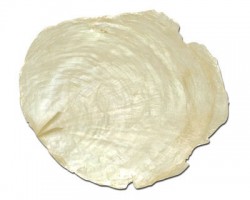Bulletproof glass found its origin in an accidental discovery, but some scientists believe we must look no further than nature to unlock the next stage in high-tech, bulletproof glass.
Bullet Resistance in Nature
Researchers at MIT have been analyzing the windowpane oyster whose shell is 99% ceramic and 80% transparent. They have observed its ability to withstand multiple hits and unlike glass, the shell does not fracture when penetrated and remains transparent. The shell is comprised of several layers of diamond-shaped crystals of calcite bonded together with organic material. As the shell is penetrated, new crystals of calcite form around the deformation, localizing damage. Some Indian and Phillipine cities are already using the material as a low-cost alternative to window glass.
Scientists from the French National Centre for Scientific Research (CNRS) have also been turning to nature for inspiration. Using the structure of mother-of-pearl, or nacre, they have been able to create super strong and heat-resistant armor. They are working on generating man-made nacre, which is much less brittle and can be heat resistant up to 1,112 degrees Fahrenheit. The biggest challenge of bio-inspired research is taking the findings of a laboratory and reproducing it in large scale applications.
Bulletproof Glass: A Look Back in Time
The origin of bulletproof glass dates as far back as the 1600s to “Prince Rupert’s” Drops, made by dribbling a dollop of molten glass into cold water, where the blob naturally wants to form a teardrop. The quick cooling process causes the tempered glass forms to have a “bulletproof” head.
It wasn’t until an accidental discovery in 1903, however, that we began using tempered glass for safety. After knocking a glass flask off his desk, French chemist, Édouard Bénédictus, observed that the glass did not break into tiny pieces as he would have expected, but instead simply broke while still maintaining its form. This was the result of a plastic cellulose nitrate that had dried on the interior of the flask creating an adhesive film coating. Bénédictus went on to develop safety glass formed by bonding a layer of celluloid between two layers of glass. This same lamination process, now comprised of a flexible polycarbonate sandwiched between two layers of glass, is used in modern bulletproof glass.
NEXT STEPS:
- Learn what happens if the tail of a “Prince Rupert” drop is cracked.
- Download our free infographic on Bulletproof Glass Through the Ages.
- Sign up for our newsletter to stay up-to-date with the latest industry news.


